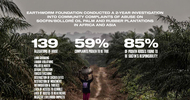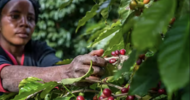Business Times | 2 December 2011
Olam International is investing US$49.2 million in its first rice farming and milling facility, which will be located in Nigeria and will deliver an internal rate of return (IRR) of 28 per cent.
One analyst noted that the IRR is high, but said the project also carries high risks.
'There is no free lunch,' said OCBC Investment Research's Carey Wong. 'Agriculture is subject to issues such as pests (wiping out crops), diseases and bad weather. There are also political risks in Nigeria.'
Olam said in a statement yesterday that it will start rice planting during the April-June period, its last quarter for FY2012.
The facility will begin to generate revenue in FY2013, and will be fully operational by FY2016.
The 6,000 hectare farm in Nasarawa, one of Nigeria's main rice growing belts, is expected to yield 36,000 tonnes of milled rice annually at its peak, and will be sold through Olam's distributors and dealers across Nigeria, where it already has a presence.
UOB-Kay Hian analyst Eugene Ng said that the farm will likely raise profit margins for Olam's rice operations, but that it is likely to be a 'very tiny' increase.
The company currently works with several rice farms, but does not own any of them. It is among the largest rice traders globally.
The company's investment in rice farming in Nigeria comes at a time when the government has pledged to raise rice production in the country - said to be among the world's largest consumers of rice.
Nigeria consumes about 5.5 million tonnes of the commodity each year, of which 1.9 million tonnes are imported.
'Globally, land under rice cultivation has remained stagnant around 150 million ha over the last 30 years,' said Rajeev Raina, president of Olam's rice business. 'With the growth in population not being accompanied by an increase in the area under cultivation, we have seen a lot of pressure in respect of global rice supplies with growing countries either banning exports altogether or increasing the support prices of farmers, thereby increasing the selling price of milled rice in the international market.'
Mr Raina added that Olam's investment in rice farming and processing in select markets, while helping the importing countries in their import substitution efforts, 'would also help us to selectively get integrated in the value-chain by participating in attractive and higher margin profit pools upstream in rice farming'.
Olam said that it would fund its investment through a combination of internal accruals and borrowings.
Last month, the group announced a 15.1 per cent year-on-year jump in first-quarter net profit, with an overall rise in sales volumes helping to lessen the impact of lower net contribution from its cotton business.
Its shares closed 3.1 per cent higher at $2.36 yesterday.













